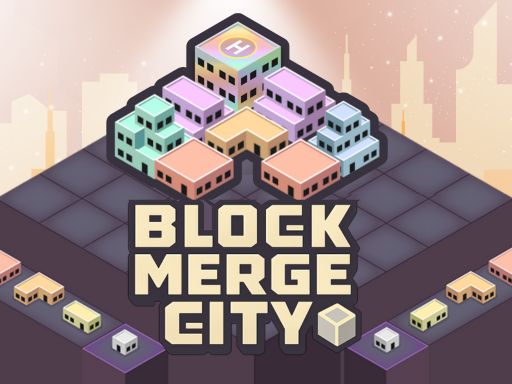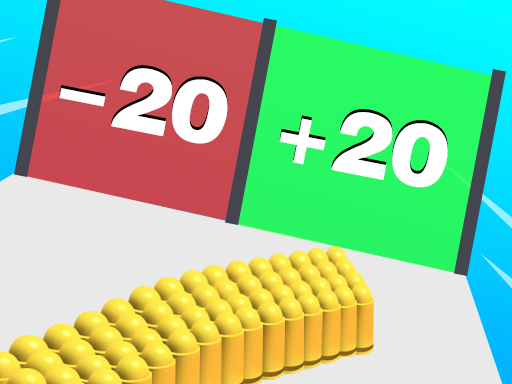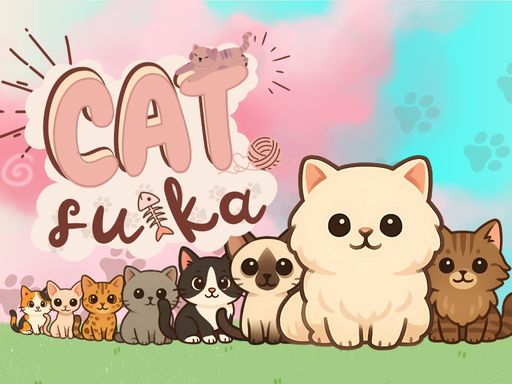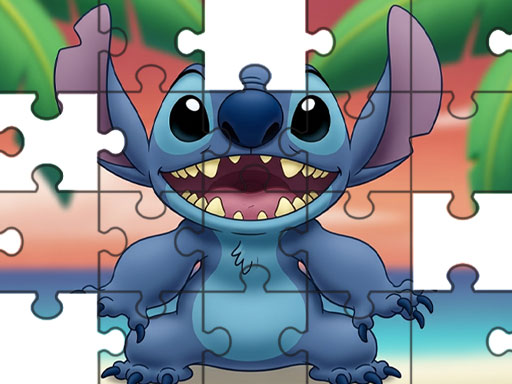Mahjong Grandmaster Puzzles
About Mahjong Grandmaster Puzzles
You know that feeling, right? That moment when you stumble across a game, almost by accident, and it just *clicks*? It’s like finding a hidden gem, a secret garden in the vast, sprawling landscape of digital entertainment. You start playing, maybe just to kill a few minutes, and then suddenly, you look up, and hours have vanished. The world outside has faded away, and all that exists is you, the screen, and that perfect, intoxicating loop of challenge and reward. Well, let me tell you, I’ve found that feeling again, and it’s all thanks to something called Mahjong Grandmaster Puzzles. And honestly, I can’t stop thinking about it.
I mean, I’ve always been drawn to games that demand a certain kind of mental gymnastics. Not just raw reflexes, though I appreciate a good action game, but something that makes you lean forward, that makes your brain hum with a quiet, focused intensity. There’s something magical about a puzzle game that manages to be both incredibly relaxing and fiercely engaging at the same time. And this one? Oh man, this one hits that sweet spot with a precision I haven't seen in ages.
When I first heard "Mahjong," I'll admit, my mind went straight to the classic tile-matching game, the one where you're just looking for identical pairs on a stack. And don't get me wrong, there's a timeless charm to that. But Mahjong Grandmaster Puzzles, it takes that familiar foundation and just… elevates it. It’s like someone took the core concept, sprinkled in a dash of strategic brilliance, and then polished it until it gleamed. It's not just about matching; it's about *thinking*. It’s about seeing the board not just as a collection of tiles, but as a living, breathing puzzle, a cascade of possibilities waiting for you to unlock its secrets.
The first time I really settled in with it, I remember thinking, "Okay, let's see what this is about." The initial layouts are gentle, almost like a warm invitation. You've got these beautifully rendered tiles, each one distinct, sitting there in intricate patterns. And your goal, simple enough on the surface, is to clear the board. But it's *how* you clear it that makes all the difference. You're not just looking for two identical tiles that are free on at least one side. Oh no, that's just the beginning. That's your basic pair match, your bread and butter. But then, you start to notice something else. The game nudges you, almost imperceptibly, towards a deeper understanding.
This is where the "Grandmaster" part really starts to sink in. You see, you can combine tiles in more complex ways, and this is where my brain just lit up. Take the "chow," for instance. Imagine you have a sequence of three tiles, say a Bamboo 3, 4, and 5. If you can free up two pairs that, when combined, form that sequence, boom! They're gone. It’s not just about finding two identical tiles; it’s about *creating* a sequence from seemingly disparate parts. It’s like seeing the potential for a melody in individual notes. And the satisfaction when you pull off a perfect chow, clearing a crucial section of the board, it's just immense. You can almost feel the weight of the tiles lifting, the board breathing a sigh of relief.
And then there’s the "kong." This one, for me, is pure genius. Instead of just two pairs, you’re looking to combine *four* of a kind. Think about that for a second. You’re not just finding two identical tiles, you're looking for *four* of them, and then strategically clearing them. It demands a level of foresight that really pushes you. You might see two of a kind available, but then you spot two more buried deeper in the layout, and you realize, "Aha! If I clear these first, I can set up that kong later." It transforms the game from a simple matching exercise into a chess match against the board itself. You're not just reacting; you're planning, strategizing, looking several moves ahead.
What's fascinating is how the game manages to present these mechanics without ever feeling overwhelming. It’s a masterclass in gradual onboarding. You learn by doing, by experimenting, by that little spark of "what if?" that ignites in your brain. And the brilliant thing about this is that it opens up so many more possibilities for clearing the board, especially when you’re staring at a seemingly impossible configuration. Suddenly, a dead end becomes a new path, a bottleneck becomes an opportunity.
And the layouts! Oh my goodness, the layouts are just incredible. They’re not randomly generated; these are *handcrafted* mahjong layouts. You can feel the intention behind each one, the careful thought that went into placing every single tile. Some are sprawling and complex, towering structures that demand a methodical approach. Others are tight and intricate, almost like a delicate lace pattern, requiring surgical precision. Each new level feels like a fresh puzzle, a new challenge waiting to be unraveled. There's no sense of repetition, no feeling of "seen this before." Every board feels unique, a little universe of its own.
In my experience, the best moments come when you’re down to the wire. The clock is ticking – because, yes, there's often a clock, adding that delicious layer of pressure – and you're staring at the last few tiles. Your heart rate picks up just a little. You’ve got to make every move count. You can almost feel the tension in your shoulders as you scan the remaining pieces, desperately searching for that one perfect match, that one chow, that one kong that will clear the board and send you soaring to victory. And when you find it, that moment of clarity, that sudden "AHA!" that washes over you, it’s just pure, unadulterated satisfaction. It’s the kind of mental workout that leaves you feeling invigorated, not drained.
What I love about games like this is how they train your mind without you even realizing it. You’ll find yourself developing an almost instinctual ability to spot patterns, to see connections where others might just see chaos. Your logic skills sharpen, your spatial reasoning improves, and your ability to plan ahead becomes second nature. It’s not just about playing a game; it’s about *growing* as a player, as a thinker. And the game rewards that growth. You’re not just clearing boards; you’re "upgrading" your skills, pushing your own boundaries with each new challenge.
The visual design is also something that really pulls you in. The tiles themselves are beautiful, with crisp, clear iconography that makes identifying them a breeze, even in the heat of a timed challenge. The backgrounds are often subtle, elegant, and atmospheric, never distracting from the main event but always adding to the overall aesthetic. It creates this really immersive experience where you feel like you're truly interacting with something tangible, something tactile, even though it's all digital. You can almost feel the smooth surface of the tiles under your fingertips as you mentally pick them up and place them.
Honestly, I’ve lost track of time more than once playing this game. I'll start a session thinking I'll just clear a couple of boards, and then the next thing I know, the sun has moved across the sky, and I've completed an entire chapter of puzzles. It's that kind of engrossing. It pulls you into a state of flow where the outside world just melts away, and all that matters is the elegant dance of strategy and observation unfolding on your screen.
And the progression feels so natural. You start with simpler layouts, mastering the basics of matching and then slowly, almost imperceptibly, the game introduces more complex structures, more challenging tile configurations, and tighter time limits. It’s never a sudden spike in difficulty that makes you want to throw your controller across the room. Instead, it’s a gentle incline, constantly pushing you to improve, to refine your strategies, to see the board with new eyes. The real magic happens when you realize you've just cleared a board that, a few hours ago, would have seemed utterly insurmountable. That feeling of accomplishment, of having genuinely sharpened your mind and overcome a significant challenge, is incredibly rewarding.
This makes me wonder about the brilliant minds behind these handcrafted puzzles. How do they come up with so many unique and engaging layouts? What's their process for ensuring each one offers a fresh twist, a new strategic dilemma? It speaks volumes about the dedication and creativity poured into this game. It's not just a collection of levels; it's a journey, a meticulously curated experience designed to delight and challenge at every turn.
So, if you're like me, if you appreciate games that respect your intelligence, that offer a quiet but profound sense of satisfaction, and that can genuinely make hours disappear in the most delightful way possible, then you absolutely *have* to check out Mahjong Grandmaster Puzzles. It's more than just a puzzle game; it's an exercise in mental agility, a beautiful journey through intricate designs, and honestly, it’s just plain fun. Trust me on this one. You'll thank me later when you're deep in the zone, clearing a complex board with a perfectly executed kong, feeling like the grandmaster you were always meant to be. It's an experience that truly enthralls, pulling you in with its elegant simplicity and keeping you hooked with its surprising depth. You're not just playing a game; you're becoming part of its intricate, satisfying world.
I mean, I’ve always been drawn to games that demand a certain kind of mental gymnastics. Not just raw reflexes, though I appreciate a good action game, but something that makes you lean forward, that makes your brain hum with a quiet, focused intensity. There’s something magical about a puzzle game that manages to be both incredibly relaxing and fiercely engaging at the same time. And this one? Oh man, this one hits that sweet spot with a precision I haven't seen in ages.
When I first heard "Mahjong," I'll admit, my mind went straight to the classic tile-matching game, the one where you're just looking for identical pairs on a stack. And don't get me wrong, there's a timeless charm to that. But Mahjong Grandmaster Puzzles, it takes that familiar foundation and just… elevates it. It’s like someone took the core concept, sprinkled in a dash of strategic brilliance, and then polished it until it gleamed. It's not just about matching; it's about *thinking*. It’s about seeing the board not just as a collection of tiles, but as a living, breathing puzzle, a cascade of possibilities waiting for you to unlock its secrets.
The first time I really settled in with it, I remember thinking, "Okay, let's see what this is about." The initial layouts are gentle, almost like a warm invitation. You've got these beautifully rendered tiles, each one distinct, sitting there in intricate patterns. And your goal, simple enough on the surface, is to clear the board. But it's *how* you clear it that makes all the difference. You're not just looking for two identical tiles that are free on at least one side. Oh no, that's just the beginning. That's your basic pair match, your bread and butter. But then, you start to notice something else. The game nudges you, almost imperceptibly, towards a deeper understanding.
This is where the "Grandmaster" part really starts to sink in. You see, you can combine tiles in more complex ways, and this is where my brain just lit up. Take the "chow," for instance. Imagine you have a sequence of three tiles, say a Bamboo 3, 4, and 5. If you can free up two pairs that, when combined, form that sequence, boom! They're gone. It’s not just about finding two identical tiles; it’s about *creating* a sequence from seemingly disparate parts. It’s like seeing the potential for a melody in individual notes. And the satisfaction when you pull off a perfect chow, clearing a crucial section of the board, it's just immense. You can almost feel the weight of the tiles lifting, the board breathing a sigh of relief.
And then there’s the "kong." This one, for me, is pure genius. Instead of just two pairs, you’re looking to combine *four* of a kind. Think about that for a second. You’re not just finding two identical tiles, you're looking for *four* of them, and then strategically clearing them. It demands a level of foresight that really pushes you. You might see two of a kind available, but then you spot two more buried deeper in the layout, and you realize, "Aha! If I clear these first, I can set up that kong later." It transforms the game from a simple matching exercise into a chess match against the board itself. You're not just reacting; you're planning, strategizing, looking several moves ahead.
What's fascinating is how the game manages to present these mechanics without ever feeling overwhelming. It’s a masterclass in gradual onboarding. You learn by doing, by experimenting, by that little spark of "what if?" that ignites in your brain. And the brilliant thing about this is that it opens up so many more possibilities for clearing the board, especially when you’re staring at a seemingly impossible configuration. Suddenly, a dead end becomes a new path, a bottleneck becomes an opportunity.
And the layouts! Oh my goodness, the layouts are just incredible. They’re not randomly generated; these are *handcrafted* mahjong layouts. You can feel the intention behind each one, the careful thought that went into placing every single tile. Some are sprawling and complex, towering structures that demand a methodical approach. Others are tight and intricate, almost like a delicate lace pattern, requiring surgical precision. Each new level feels like a fresh puzzle, a new challenge waiting to be unraveled. There's no sense of repetition, no feeling of "seen this before." Every board feels unique, a little universe of its own.
In my experience, the best moments come when you’re down to the wire. The clock is ticking – because, yes, there's often a clock, adding that delicious layer of pressure – and you're staring at the last few tiles. Your heart rate picks up just a little. You’ve got to make every move count. You can almost feel the tension in your shoulders as you scan the remaining pieces, desperately searching for that one perfect match, that one chow, that one kong that will clear the board and send you soaring to victory. And when you find it, that moment of clarity, that sudden "AHA!" that washes over you, it’s just pure, unadulterated satisfaction. It’s the kind of mental workout that leaves you feeling invigorated, not drained.
What I love about games like this is how they train your mind without you even realizing it. You’ll find yourself developing an almost instinctual ability to spot patterns, to see connections where others might just see chaos. Your logic skills sharpen, your spatial reasoning improves, and your ability to plan ahead becomes second nature. It’s not just about playing a game; it’s about *growing* as a player, as a thinker. And the game rewards that growth. You’re not just clearing boards; you’re "upgrading" your skills, pushing your own boundaries with each new challenge.
The visual design is also something that really pulls you in. The tiles themselves are beautiful, with crisp, clear iconography that makes identifying them a breeze, even in the heat of a timed challenge. The backgrounds are often subtle, elegant, and atmospheric, never distracting from the main event but always adding to the overall aesthetic. It creates this really immersive experience where you feel like you're truly interacting with something tangible, something tactile, even though it's all digital. You can almost feel the smooth surface of the tiles under your fingertips as you mentally pick them up and place them.
Honestly, I’ve lost track of time more than once playing this game. I'll start a session thinking I'll just clear a couple of boards, and then the next thing I know, the sun has moved across the sky, and I've completed an entire chapter of puzzles. It's that kind of engrossing. It pulls you into a state of flow where the outside world just melts away, and all that matters is the elegant dance of strategy and observation unfolding on your screen.
And the progression feels so natural. You start with simpler layouts, mastering the basics of matching and then slowly, almost imperceptibly, the game introduces more complex structures, more challenging tile configurations, and tighter time limits. It’s never a sudden spike in difficulty that makes you want to throw your controller across the room. Instead, it’s a gentle incline, constantly pushing you to improve, to refine your strategies, to see the board with new eyes. The real magic happens when you realize you've just cleared a board that, a few hours ago, would have seemed utterly insurmountable. That feeling of accomplishment, of having genuinely sharpened your mind and overcome a significant challenge, is incredibly rewarding.
This makes me wonder about the brilliant minds behind these handcrafted puzzles. How do they come up with so many unique and engaging layouts? What's their process for ensuring each one offers a fresh twist, a new strategic dilemma? It speaks volumes about the dedication and creativity poured into this game. It's not just a collection of levels; it's a journey, a meticulously curated experience designed to delight and challenge at every turn.
So, if you're like me, if you appreciate games that respect your intelligence, that offer a quiet but profound sense of satisfaction, and that can genuinely make hours disappear in the most delightful way possible, then you absolutely *have* to check out Mahjong Grandmaster Puzzles. It's more than just a puzzle game; it's an exercise in mental agility, a beautiful journey through intricate designs, and honestly, it’s just plain fun. Trust me on this one. You'll thank me later when you're deep in the zone, clearing a complex board with a perfectly executed kong, feeling like the grandmaster you were always meant to be. It's an experience that truly enthralls, pulling you in with its elegant simplicity and keeping you hooked with its surprising depth. You're not just playing a game; you're becoming part of its intricate, satisfying world.
Enjoy playing Mahjong Grandmaster Puzzles online for free on Latoosm. This Puzzle game offers amazing gameplay and stunning graphics. No downloads required, play directly in your browser!
How to Play
Mouse click or tap to play





Comments
This game is awesome! I love the graphics and gameplay.
One of the best games I've played recently. Highly recommended!